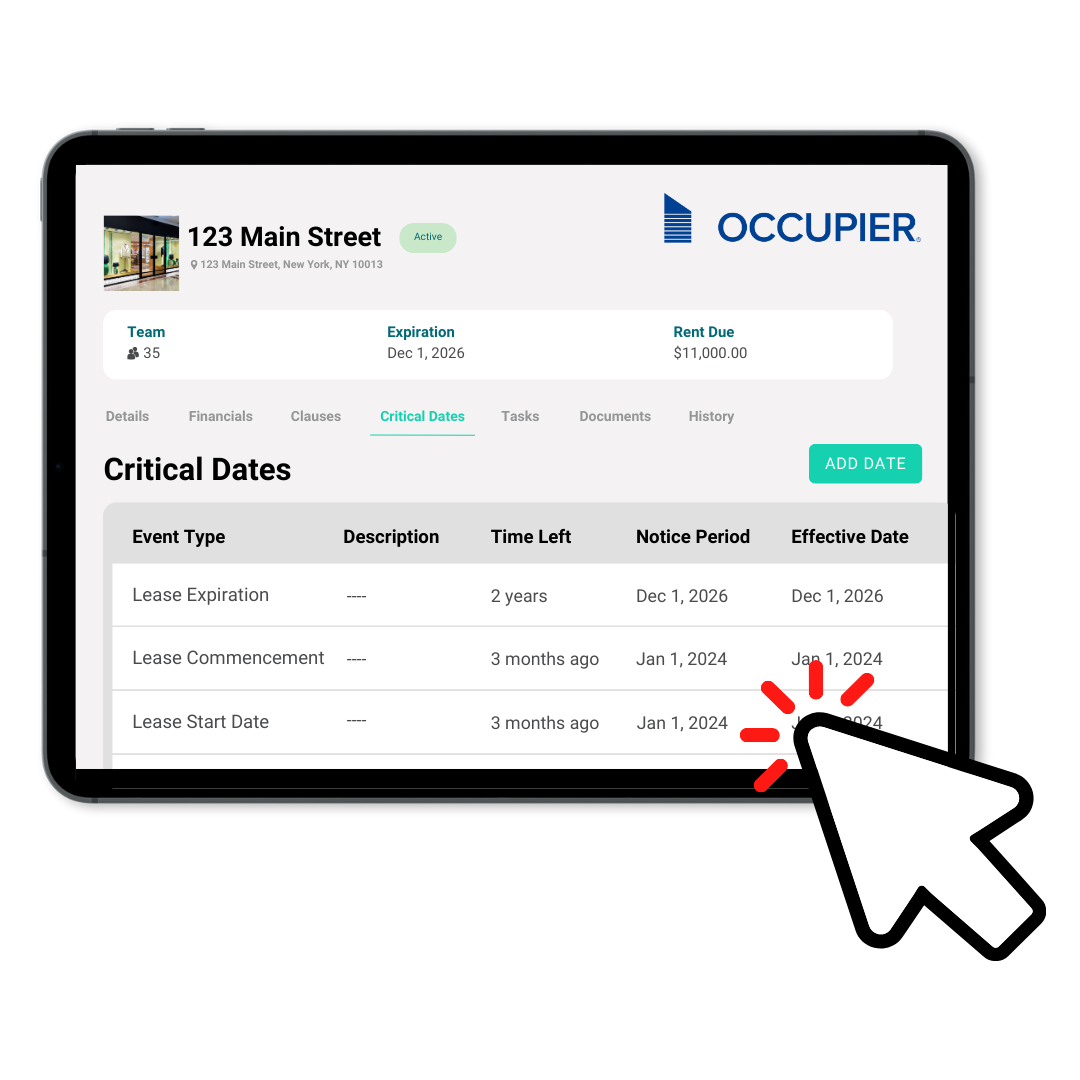The Commercial Lease Life Cycle
Last Updated on April 14, 2025 by Morgan Beard
Whether you’re at a small or a large firm with a solid portfolio of commercial real estate, you’ve probably heard your fair share about lease accounting. The lease life cycle can be a long and involved process, entailing a number of fairly detailed steps and requiring a disciplined approach to ensure proper management, execution, and compliance.
But what exactly does the lease life cycle involve? And when does the lease accounting piece come into place. First, lets give a high level overview of the lease life cycle — from transaction management to lease management and lease accounting.
Transaction Management
During the initial stages of the lease life cycle, transaction management focuses on gathering relevant information and conducting market research. This involves identifying potential properties, analyzing market trends, and evaluating the financial aspects of leasing. Transaction managers collaborate closely with both landlords and tenants to understand their requirements and preferences.
Once suitable properties are identified, the transaction management phase moves into the negotiation stage. Transaction managers facilitate communication and serve as intermediaries, ensuring that the needs of both parties are adequately addressed. They help negotiate key lease terms, such as rental rates, lease duration, maintenance responsibilities, and any additional provisions specific to the property or tenant.
Site selection, lease negotiation & contract execution
This is one of the most involved steps within this phase of the lease life cycle. From location and budget to people and aesthetics, several factors will come into play when you’re seeking out a property to lease. Of course, the goal is to narrow down the selection of buildings for consideration. At this time, companies are often best served by contacting a tenant representation broker to not only aid in the site selection process, but also conduct a needs assessment to ensure a space will adequately suit the intended purpose. This type of professional can also be valuable during lease negotiations.
During site selection, a time will come when you’ll also need to involve stakeholders outside the real estate team. Finance teams, for one, need to understand the impact of new lease acquisitions in relation to the new standards for lease accounting. Additionally, legal teams will need to review letters of intent and work with your tenant rep broker on legal negotiations with the landlord before contracts execute.
Location Buildout
Location buildout is just as it sounds: planning and making improvements to the leased space before the official move-in. This step of the lease life cycle, however, entails more than contractors and design teams. It’s important to also involve both finance and IT teams, as they’ll need to be aware of any buildout costs and technology specifications associated with the buildout.
Move-in
It’s at this stage when the finance, IT, and real estate teams will go into hyperdrive to coordinate the procurement of furniture, fixtures, and equipment (as well as anything else needed to get the space up and running before people show up). You’ll need to account for any capital expenditures in relation to the leasehold, along with any non-real estate leases for equipment such as printers, copiers, and the like.
Lease management
Ongoing lease management is the day-to-day coordination, administration, and reporting of the agreed-upon lease terms within a real estate portfolio. It involves everything from rent obligations and occupancy cost projections to details on important dates associated with terminations, renewals, rights of first refusal, and so on.
Critical Dates
Critical dates are specific milestones or events within the lease term that hold significance for both landlords and tenants. These dates can include lease commencement, lease expirations, rent escalations, renewal or termination options, and various obligations and deadlines outlined in the lease agreement. Lease administrators closely monitor and track these critical dates to ensure compliance and timely action.
Commercial Clauses
Clauses in a lease agreement are provisions that define the rights, responsibilities, and limitations of both landlords and tenants. These clauses cover a wide range of aspects, including maintenance obligations, insurance requirements, permitted use of the premises, default and remedies, assignment or subletting, and more.
Lease administrators are responsible for understanding and enforcing these clauses throughout the lease term. They ensure that both parties adhere to the agreed-upon terms, address any issues or disputes that may arise, and communicate the implications of specific clauses to landlords and tenants as necessary.
Task Workflows
Task workflows refer to the structured and systematic processes that lease managers follow to complete various lease-related tasks. These workflows outline the steps, responsibilities, and timelines associated with tasks such as rent collection, property inspections, lease renewals, lease amendments, and lease terminations. Lease administrators create and assign tasks to ensure consistency, efficiency, and transparency in managing lease-related activities.
All in all, lease management involves overseeing the operational and administrative aspects of commercial leases. It includes rent collection, financial record keeping, property maintenance, lease renewals, amendments, and terminations. Effective lease management ensures smooth communication, compliance with lease obligations, and a positive landlord-tenant relationship throughout the lease term.
Lease Accounting
Much like lease management, lease accounting is an ongoing process in which financial teams record the financial activities involved with lease agreements. With the changes brought about by ASC 842’s lease accounting standards, however, financial teams must now account for operating leases on balance sheets. This is the stage of the lease life cycle that many finance teams are becoming proficient at with the new lease accounting standards.
Streamline Financial Processes
With leases containing copious information and having near-constant updates and amendments, outdated lease accounting processes can quickly become inefficient and pose monetary risk. Finance teams require a single, centralized source of truth with real-time data on leasing portfolios at everyone’s fingertips.
Lease accounting software does just that, allowing financial departments to harness the power of digital transformation. It eliminates the need to dig through spreadsheet after spreadsheet for information. Instead, you can draw leasing details and export a report from one data set, automating many manual processes, reducing the chances of errors, and adding greater speed to lease accounting activities.
Data Centralization & Audit Trail
In fact, data readiness is often the most difficult phase of ensuring ASC 842 compliance. Many companies have signed numerous lease agreements. And, they save these contracts in decentralized locations or storing lease data on disparate systems or spreadsheets. Even when lease agreements contain all the required details (which they often don’t), collecting and abstracting said information is a time-consuming and resource-intensive task without the help of lease accounting software.
With ASC 842, IFRS 16, FRS 102 and GASB 87, auditors are closely reviewing your accounting departments assumptions and judgements as it relates to your accounting financials within your lease portfolio. A lease accounting software creates a digital audit trail so that auditors can give your financial statements a clean pass.
Empowering the lease life cycle
Beyond that, lease management with lease accounting software brings the three branches of corporate real estate portfolios together. Transaction management, lease administration, and lease accounting begin to work in tandem, setting the stage for a unified real estate strategy.
For example, think about a real estate team that’s trying to determine the long-term flexibility of a real estate portfolio by analyzing the success around negotiations surrounding termination options. The business might start reexamining its real estate expense liability. In turn, this would have a significant material impact on its second-largest expense
Finance and real estate departments have started adopting digital-forward solutions lighting speed. Thankfully, you can largely improve the efficiency and accuracy of both lease accounting and lease life cycle management with savvy lease accounting software. Check out how Occupier keeps tenant-rep brokers, real estate teams and accounting departments aligned on the entire lease life cycle.

Product Tour
Take a self-guided tour and see how the fastest-growing commercial tenants leverage Occupier for lease management & lease accounting.
